 We recently received a shipment of brand-new wireless gear from Sennheiser (from the EW-DX lineup) in preparation for a video we’re producing on going wireless later this spring. Before that, though, we thought we’d go through all the products and give our evaluation prior to the video going live.
We recently received a shipment of brand-new wireless gear from Sennheiser (from the EW-DX lineup) in preparation for a video we’re producing on going wireless later this spring. Before that, though, we thought we’d go through all the products and give our evaluation prior to the video going live.
The Components
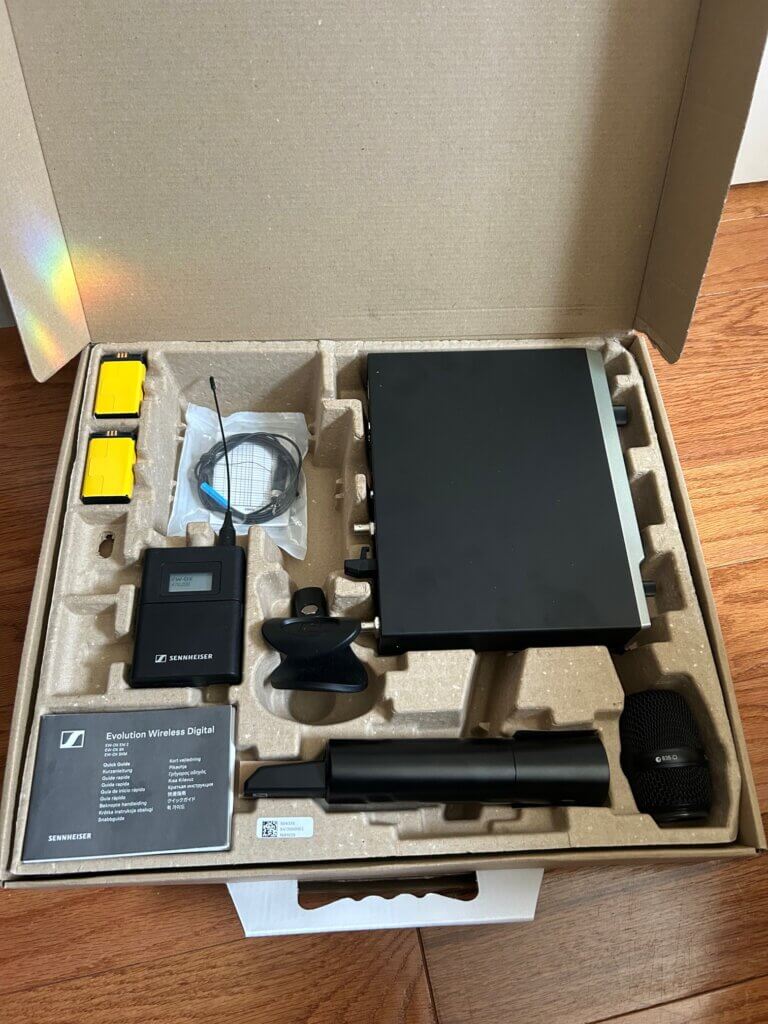
In our best Brad Pitt voice: “What’s in the box?”
We received a few items that make up a complete solution for an artist going wireless, namely:
- EW-DX EM 2 (rackmount wireless receiver)
- EW-DX SK (wireless bodypack transmitter)
- EW-DX SKM-S (handheld mic transmitter)
- MMD 835 capsule (to go on the handheld mic)
OK, so let’s unbox it all.
The EW-DX EM 2 is the heart of the system, and it handily rackmounts for your convenience on the road. It’s the receiver that all your transmitters, well…transmit to, and as such it processes all the audio traveling wirelessly to it so your music can be channeled through the front of house (FOH). In other words, this is the centerpiece of the setup.

Matched with that are the wireless bodypacks (for lav and headset mics) as well as the EW-DX SKM-S handheld unit (paired with the included 835 capsule) for your vocalist to go wireless with. The combo set we received also contained a nice little lav mic to connect to the supplied bodypack and rechargeable batteries for the transmitters. All in all, everything one could need to get up and running.
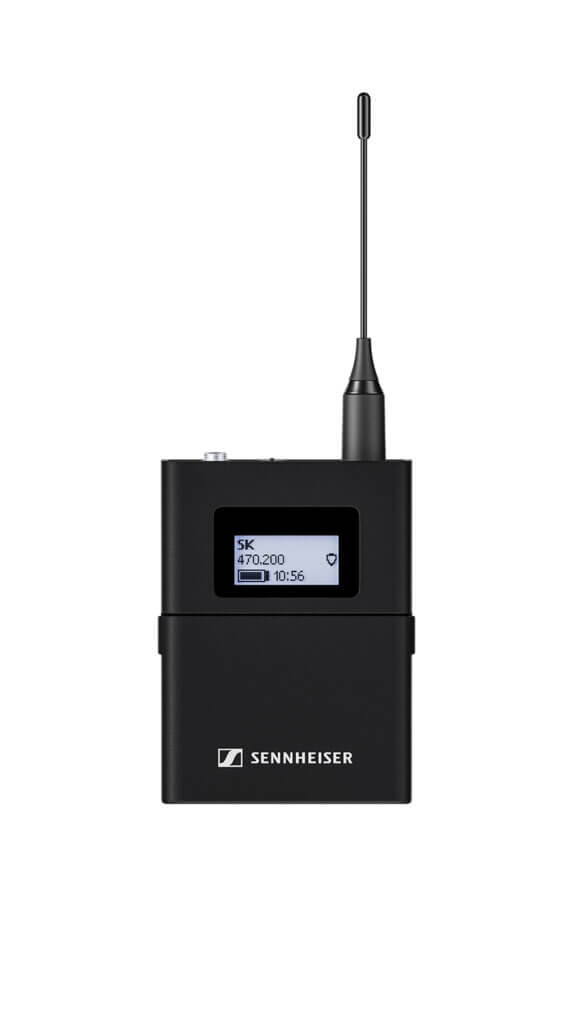
We think sets like these just make the selection process so much easier than trying to piece things together yourself, especially for those going wireless for the first time.
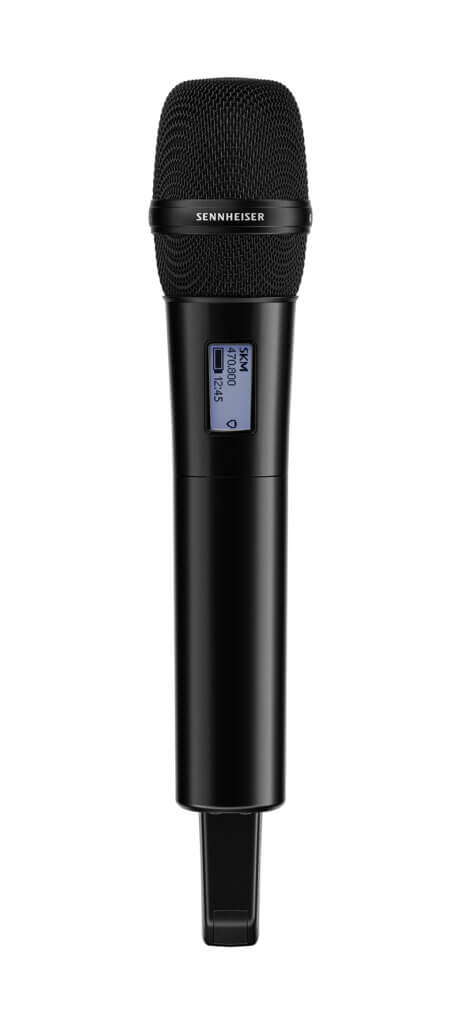
Note to other manufactures: make it as simple as Sennheiser made it! Everything just works together out of the box with no fuss. We barely had to crack the manual.
Build Quality
Overall, it’s what you’d expect from Sennheiser. Starting with the EW-DX EM 2 receiver, it’s solid, features a rugged metal chassis, and the screen and function knobs are both easy to read and turn for menu navigation. The headphone port on the front is handy for sound engineers to hear what’s going on within the unit, which is the 2-channel half-rack model.
It’s listed as having 134 dB input dynamic range, and as such there’s no gain controls on any of the transmitters. Again, for those going wireless for the first time, it just simplifies things nicely.

It’s got power over Ethernet and encryption for those of you concerned about keeping your wireless transmissions safe and secure, but most of all it’s just built like a tank and easy to use. Flipping over to the rear, you’ve got your unbalanced and balanced outs, antennae inputs and power. Simple, and not overwhelming. The only thing we would mention to Sennheiser is making the antennae a bit easier to locate in the box (we nearly missed them under the receiver’s packaging)
The handheld mic transmitter is lightweight, but at the same time solidly built. Popping on the capsule is a breeze, and the e-ink screen is easy on the eyes, as well. The whole setup has an auto-scan feature that makes connections super-easy. You don’t have to be a computer programmer to turn the mic on, transmit a signal, and have the receiver send it out to the PA system. Which, for us, is a blessing.
Likewise, the bodypack features a similar e-ink screen and simple connection for the included, clip-on style lav mic, and again the setup process is a snap. Battery changes on both units is easy, as well. Not something typically worth mentioning, but if it’s dark on stage (or backstage) and you can do it by feel one-handed, it’s just one more thing to save time and headaches — so, further kudos to the Sennheiser design engineers.
The Setup & App
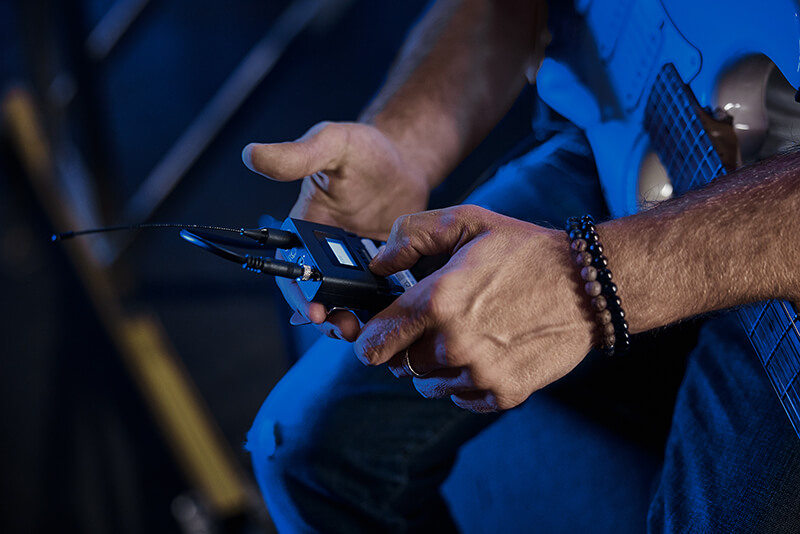
As we mentioned, turning the transmitters on and pairing them with the receiver was almost so easy it hardly warrants any more discussion. But I will say this – there’s an app for that. And yes, While we’ve bemoaned apps in the past (mostly because they were poorly designed, didn’t work all that well and became ‘abandon-ware’ far too quickly after the hardware was released), times have certainly changed for the better.
While we didn’t spend a ton of time with the Smart Assist App (we’ll save that for the video), it does appear to be pretty intuitive, easy to navigate and change settings, and works on both iOS and Android devices.
The Tests
While we’re saving most of the true testing for the video portion of this project, our initial, unscientific studio tests were very positive. For starters, latency is pretty much a non-issue, which is always our worry with wireless gear (who wants to hear their vocals out of time with the rhythm section?) and signal strength and clarity met and exceeded our expectations with the handheld mic and lav options.
Battery life is on par with what Sennheiser claims, just shy of 8 hours for AA batters (and up to 12 with the lithium-ion packs) and our limited initial tests of distance/range were all rock solid. No audio dropouts, hiccups, glitches or other such nonsense that we’ve encountered on more entry-level units of yesteryear.
This is the real deal – seriously, vocals sound crisp, balanced and clear and the tech specs under the hood make this system a force to be reckoned with.
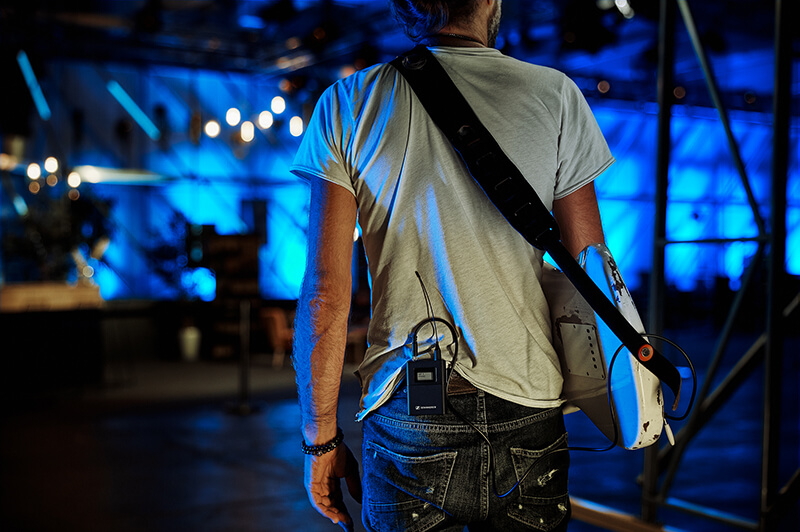
Final Thoughts
We look forward to sharing our video feature with you, as we put the entire system into a real-world band’s rig so see just how well it actually performs in a true live scenario, while providing some helpful how-to setup tips along the way. Until then, we heartily recommend the EW-DX system for most band’s needs. This particular bundle comes in around the $2500 USD mark, but you can configure systems to meet your exacting needs. True, that might be an investment for some acts, but it’s likely the last wireless system you’d need to buy for a very long time, and the freedom it affords you on stage is priceless.
We can’t wait to see you out on the road this summer (cable-free, we hope!)
PRO:
easy setup, great sound, long battery life, fairly affordable for the complete system
CON:
none
